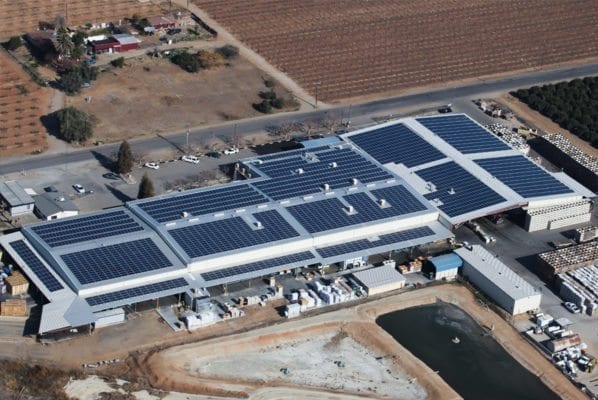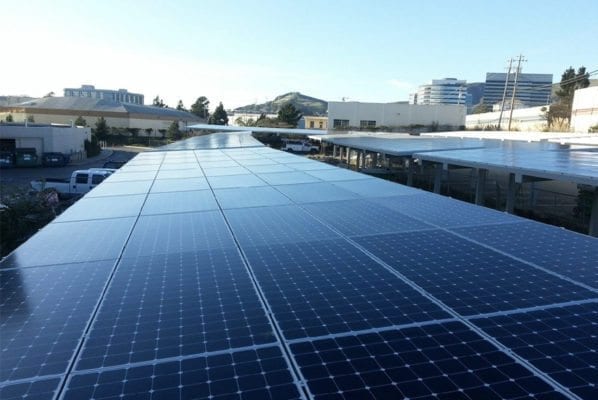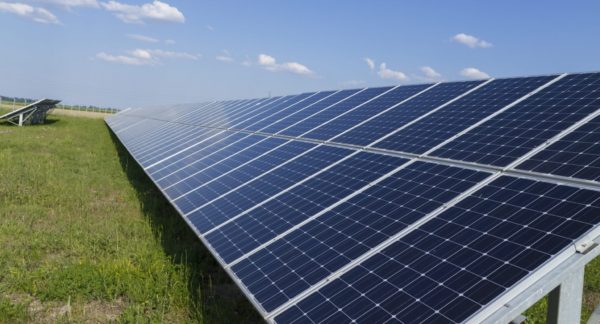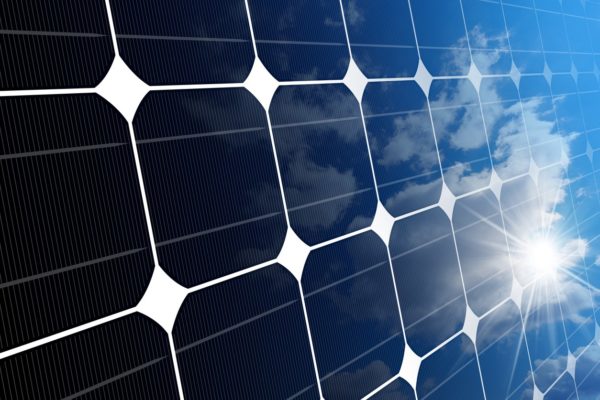
Commercial property owners rely heavily on solar energy to cut costs and save on power bills. According to the Solar Energy Industries Association, more companies choose to put solar panels in their commercial buildings yearly.
Those who already utilize solar energy are increasing their usage. Everyone looking at solar installations for their businesses would benefit from this guidance. Discover the benefits and drawbacks of commercial solar, the many system types, a step-by-step manual for getting solar, and financing options.
Solar energy utilization has increased due to the quest for renewable energy sources. The Solar Investment Tax Credit and significant commercial and industrial demand for sustainable energy have helped the solar industry grow by approximately 50% in the last ten years.
It is important to understand solar panels, the foundation of the solar industry, as it continues to grow. This article will outline the many commercial solar system types currently on the market, their advantages and disadvantages, and which is most appropriate for particular use cases.
Advantages and Disadvantages of Commercial Solar Energy

Let us look at the advantages and disadvantages of installing a commercial solar system for your business.
Pros of Commercial Solar Systems
1. Reduce Operating Costs
Commercial solar panel installations can lower energy costs monthly. Commercial solar systems enable enterprises to “zero out” their electricity use by producing as much electricity as needed.
2. Lock-In Energy Costs for Years to Come
Natural gas prices change, so even prudent decisions now may not always result in long-term savings. Solar has the advantage of a set cost. Additionally, it makes it easier for businesses to forecast cash flows.
3. Decrease Your Carbon Footprint
According to the Solar Energy Industries Association, burning fossil fuels for commercial energy use accounts for more than a third of U.S. greenhouse gas emissions. Solar energy can have a favorable effect because it generates clean, emission-free electricity.
4. Green Branding/Marketing Opportunities
Strong corporate citizenship demonstrates a company’s dedication to its customers and communities. Solar energy purchases are one of the best methods to demonstrate this responsibility. Businesses can demonstrate their commitment to lowering greenhouse gas emissions and pollution by using clean, renewable energy. Environmental protection supports successful PR and marketing initiatives.
5. Accelerated Depreciation
A business’s investments in specific tangible property are depreciated using the Modified Accelerated Cost Recovery System (MACRS), which allows for annual deductions for tax purposes over a predetermined time. The cost recovery period for some solar energy systems might be five years.
Cons of Commercial Solar Systems
1. Upfront Costs
The business owner may be looking at hefty upfront expenditures to install the solar energy system depending on the manner of financing. A system might be exceedingly expensive to buy outright. There are other choices, though, that cost little to nothing upfront.
2. Weather Unpredictability
More sunlight results in greater electrical production. Business owners who reside in regions with erratic or overcast weather will discover that solar can still be advantageous. Compared to someone living in a state with plenty of sunshine, they might need more panels to produce the same amount of electricity.
3. May Need a Roof/Electrical System Upgrade
The roof or electrical system might need to be improved or rebuilt after the site audit. Solar energy may not be as appealing for business owners trying to save money due to its hefty upfront cost.
Types of Commercial Solar Systems

Over the past 60 years, solar technology has grown quickly. Today’s solar installation and design businesses can work with almost any type of property to reduce costs with solar electricity.
Carports
Business owners can effectively utilize sizable parking grounds thanks to solar carport systems. In addition to providing shade and covered parking, these systems can generate electricity.
Solar carports are an easy and affordable method for businesses that cannot opt for roof-mounted systems to generate solar power. They are a stylish answer for those who want to boost the output of their current rooftop solar systems. Panels on carport constructions also provide simple access for upkeep and cleaning.
Flat Rooftop Systems
Businesses have three major options for flat rooftop solar energy systems: attached, ballasted, or a combination. The roof, the method used to construct the building, and a structural engineering analysis will influence which system is chosen.
A connected system depends on connections to the structure and holes drilled into the roof’s surface. Instead of using weight to hold the array down, a ballasted system relies on the system’s weight as a whole, including the panels, racking, and other components. A hybrid system is regarded as being minimally attached and calls for both penetrations and ballasting.
Slanted Rooftop System
Solar technology has progressed to support all roof types, including tilted ones. Whether the roof is sloping and made of metal, wood shingles, Spanish tile, or composition shingles, commercial solar suppliers and installers may work with company owners to take advantage of solar electricity and its numerous advantages. Slanted rooftops need penetrations to stay attached to the roof and are unsuitable for ballasted mounting solutions.
Tracker Systems
As the panels shift to follow the sun, trackers are made to produce more energy. Dual-axis systems track along the x and y axes, while single-axis systems move the panels from east to west.
Consumers should ideally be able to receive more kilowatt-hours per panel thanks to tracking technologies. In contrast to the standard solar system, which is installed at a fixed angle and has no moving elements, it costs more to develop, install, and maintain.
Although trackers are not as widely used as conventional fixed-mounted devices, and their dependability is frequently questioned, technological advancements could soon make them more popular and reliable.
Ground Systems
Ground-mounted systems are a cost-effective alternative for businesses with rooftops that are not appropriate for solar or are too small to satisfy electricity needs.
Ground-mounted systems can be sized to fit electricity use and created to be as efficient and productive as feasible if the business owner has the area available. The two basic categories of ground mounts are. To maintain solar panels at a set angle, standard ground mounts use a metal framework that is pushed into the ground. Pole mounts raise panels higher off the ground and occasionally tilt them towards the sun using tracking devices.
Utility-Scale Systems
The clean energy produced by utility-scale solar is sold to customers rather than private individuals. These clean energy projects can be developed thanks to federal and state laws.
The Solar Energy Industries Association reports that there are now 37,000 MW of utility-scale solar projects in the United States, and another 74,000 MW are in the planning stages. Utility-scale solar has numerous advantages, including positive environmental and economic effects. One of the quickest methods to cut carbon emissions is through solar power on such a massive scale.
Additionally, whereas fossil fuel prices continuously fluctuate, these solar power plants produce electricity at a set price.
Programs and Incentives Available for Paying Your Commercial Solar Energy Projects

- Modified Accelerated Cost Recovery System: It allows you to deprecate your solar system’s cost.
- ZRECs: Get compensated to buy less electricity at the retail level. You use a qualified generator to produce power from renewable sources (your solar array). Afterward, you use the energy generated. Then you have compensated a certain sum for the ZERCs you have produced. One MWh of energy can be produced with one REC (megawatt hour). Throughout the contract’s 15-year lifespan, RECs are generated and given quarterly each year.
- C-PACE: PACE is a tax-lien financing program that enables property owners to access cheaper interest financing of solar projects by structuring it as a property tax assessment, provided that their solar power installation satisfies specific qualifying standards.
- Business Energy Investment Tax Credit: A 30% credit is available for the entire cost of your solar array in the first year. This includes both hardware and installation.
What Makes Commercial Solar Panels Efficient?

Various factors determine the efficiency of solar panels. These typically include the local climate, material type, and the panels’ construction and design.
Operating Temperatures
Typically, solar panels can operate at temperatures between 59°F and 95°F. The majority of panels are tested at 77°F. However, efficiency drastically decreases when temperatures rise or fall outside that range.
Contrary to popular belief, hot climates like Texas or Arizona are ideal for solar energy because of their long, sunny days rather than hot weather. In these areas, solar panel’s ability to produce energy is hampered by high temperatures because silicon produces more heat than electricity at these temperatures.
Material
The type of material utilized in the solar cell is possibly the most crucial aspect of efficiency. Today, monocrystalline or polycrystalline silicon is used to make most commercial solar panels. Monocrystalline solar panels are typically more effective than their polycrystalline counterparts since they are made of a single, massive silicon crystal. Thus, monocrystalline solar panels make up most contemporary, high-efficiency commercial solar panels.
Reflectivity
Reflectivity is a crucial element. Because the glass of a well-designed panel has a low coefficient of reflection, most sunlight that strikes it will be absorbed and turned into electricity. High reflectivity panels will let part of the solar energy bounce off their surface.
Opt For Coldwell Solar for Your Commercial Solar Energy Solutions
You can dramatically reduce your overhead business costs by installing solar panels. Additionally, your company will contribute to the transition to a sustainable future. In order to start enjoying all these advantages for your company, get in touch with Coldwell Solar for more details on installing a commercial solar system.

